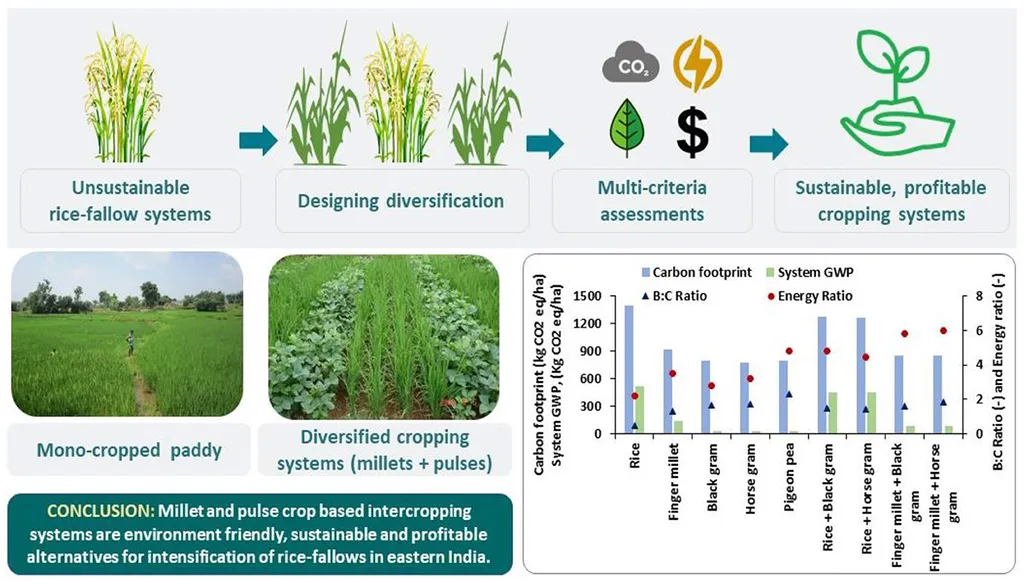In the heart of India’s agricultural landscape, a groundbreaking study led by Shilpa from the University of Agricultural Sciences in Bengaluru is reshaping the way we think about crop diversification and yield enhancement. The research, published in ‘Frontiers in Agronomy’ (translated to ‘Frontiers in Field Cultivation’), is a beacon of hope for farmers grappling with the multifaceted challenges of modern agriculture, from climate change to resource depletion.
The study zeroes in on finger millet-based cropping systems, a staple in many Indian diets, and explores the potential of intercropping with legumes like soybean, green gram, and black gram. The findings are nothing short of transformative. “The combination of finger millet and green gram, along with a strategic application of 75% of the recommended doses of fertilizers, has shown remarkable results,” Shilpa explains. This intercropping system not only boosted the grain and straw yield of finger millet but also significantly increased the seed and haulm yield of green gram.
The implications for the energy sector are substantial. As the world grapples with the need for sustainable energy sources, the agricultural sector is increasingly being looked upon to contribute. Crop residues, often burned and contributing to environmental pollution, can be repurposed as bioenergy feedstock. The enhanced straw yield from these intercropping systems can thus be a valuable resource for the energy sector, promoting a circular economy where agricultural waste is transformed into energy.
Moreover, the study’s focus on nutrient management offers a blueprint for optimizing resource utilization. By applying 75% of the recommended doses of fertilizers, the research team achieved the highest grain and straw yields, demonstrating that efficient nutrient management can lead to both environmental and economic benefits. This approach can help reduce the energy consumption associated with fertilizer production and application, further contributing to the sector’s sustainability.
The study also introduces several productivity metrics, such as finger millet equivalent yield, land-equivalent ratio, competition ratio, and area-time equivalent ratio, which were all maximized in the finger millet + green gram intercropping system. These metrics provide a comprehensive view of the system’s efficiency and productivity, offering valuable insights for farmers and policymakers alike.
Looking ahead, this research could shape future developments in the field by promoting the adoption of sustainable agricultural practices. As Shilpa notes, “Integrated strategies that foster climate-resilient farming and optimize resource utilization are key to tackling the sustainability challenges in Indian agriculture.” By embracing these strategies, the agricultural sector can not only enhance its productivity but also contribute to the broader goals of energy sustainability and environmental conservation.
In the face of climate change and resource depletion, this study offers a ray of hope and a roadmap for the future. It underscores the importance of crop diversification and sustainable nutrient management, paving the way for a more resilient and productive agricultural sector. As the world continues to grapple with these challenges, the insights from this research will undoubtedly play a pivotal role in shaping the future of agriculture and energy.

